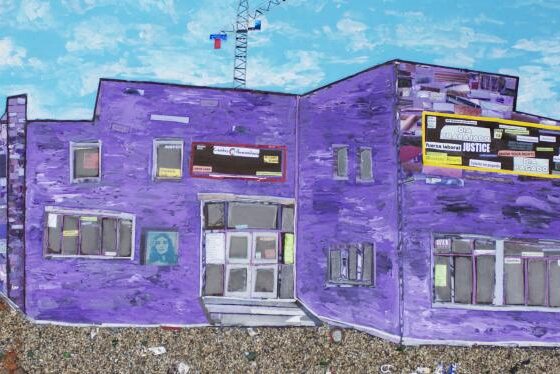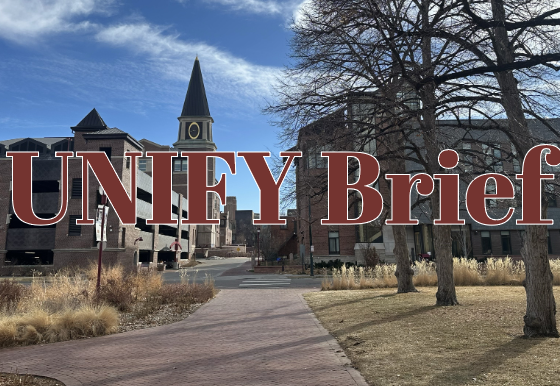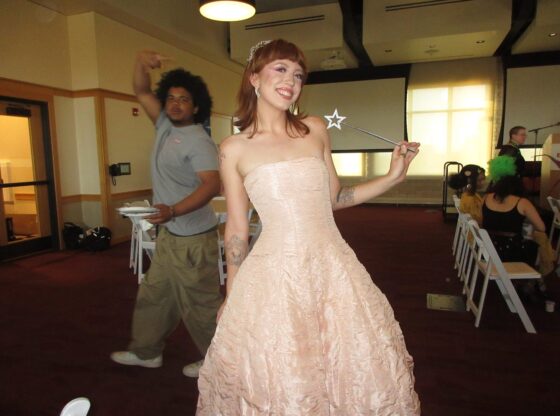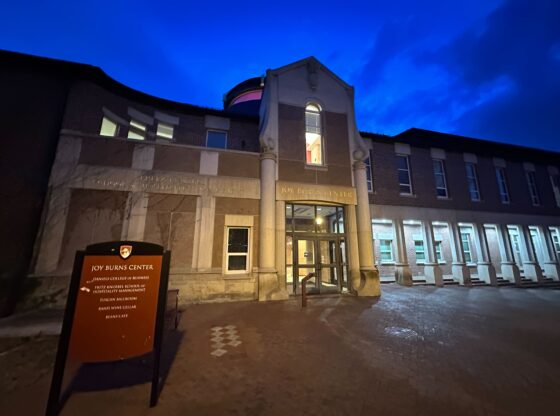The University of Denver Museum of Anthropology (DUMA) is hosting a new exhibit showcasing the work of DU anthropology professor, Dr. Rebecca Galemba. Entitled “Laboring for Justice: Community Engaged Anthropology and Artistic Interpretation,” the exhibit accompanies Dr. Galemba’s new book, “Laboring for Justice: The Fight Against Wage Theft in an American City.”
When entering DUMA, one is immediately welcomed into a calm space that could be mistaken for a nicely decorated, quiet student lounge. With dimmed lights, and possibly a white sound machine, DUMA is a relaxing area where one can take a break from their busy schedules and appreciate artwork curated by professors and colleagues.
Resembling an art gallery, DUMA intricately presents each work of art. The pieces are spaced out along the walls, so one does not feel overwhelmed and can take the time to examine and read about the work. The ambiance of the room adds to the feel of an art gallery as the ceiling lights only shine on the art pieces. What makes DUMA unique is the interactive wall that awaits individuals either at the beginning or end of their walkthrough, depending on which entrance they take. The community is asked to answer the following questions: “How can art contribute to social change? How can it change the conversation?”
Dr. Galemba’s book focuses on the struggles low-wage migrant workers encounter in cities like Denver, emphasizing that wage theft is a systemic issue prevalent in the U.S. economy. By drawing on seven years of research that was accumulated using an anthropology approach, Dr. Galemba was able to speak to community members, advocates, students, attorneys and policymakers about their experiences. Dr. Galemba stresses the importance of addressing wage theft by connecting the dilemma to additional societal issues such as immigration and social justice.
The exhibit includes art pieces that are different interpretations of the artists’ interaction and understanding of wage theft. Many of the pieces were done by Dr. Galemba, who felt inspired to accurately depict the experiences of migrant workers with a focus on their environment. The exhibit took 2.5 years to curate.

“I become troubled by photos which seemed to freeze individuals in time at the corners where they waiting for work, reproducing stereotypical representations of day laborers that neglect their more complex identities and lives. I then decided to do more artistic representations drawing from some of these photos and other images around Denver and in the immigrant rights movement.” Dr. Galemba shared.
Diego Bleifuss Prados, a University of Denver 2018 graduate, has one of his own watercolor paintings displayed in the exhibit. The painting depicts an alleyway behind a day laborer center off of Dayton and Colfax. The painting holds a significant meaning to Prados as the corner of the busy intersection is where he met with advocates for wage theft and would later go on to help them in their fight—to keep up with more of Prados’ work, check out his Instagram.

The largest piece of the exhibit is Dr. Galemba’s collage. The piece is a collaborative work with assistance from the founder of The Art Barn Anna Wall, Leslie Judy, and Dr. Galemba’s daughter, Lanie Galemba, the piece uses various materials that are often overlooked. Together, bottle caps, wrappers, rocks, wire, glass, magazines, business cards, pamphlets, beer and soda cans create a unique and detailed depiction of the former Centro Humanitario Para Los Trabajadores building.
Centro played a large role in the immigrant rights movement and provided its members with a place to come together. “I hope it provides a memory of the community it created and inspires conversations about the organization’s future,” Dr. Galemba stated. The organization sold its building in 2021 as a result of higher expenses due to gentrification and the consequences of the pandemic and moved to a different location in Denver.
The collage is a favorite not only to Dr. Galemba but also to longtime DUMA curator and director, Dr. Christina Kreps, who particularly liked the collage’s aesthetic and appreciated the communal creativity. Dr. Kreps has been overseeing the creation of DUMA exhibits for over 20 years and describes her time with DUMA as a rewarding experience as she is able to collaborate with faculty. For many faculty members, their exhibits at DUMA are their first art/visual displays.
“I think it is very important for our faculty and students in anthropology to see how art and creative expression can be a tool of research and communication in addition to writing articles and books,” said Dr. Kreps.
Dr. Kreps and Dr. Galemba hope the exhibit brings awareness to the DU community regarding the unjust conditions that many members of our society face, while also provoking new conversations on how we can work together to create social change.
“I hope it stimulates new conversations around Denver, immigration and workers’ rights as well as the role of art and other forms of creative expression in allowing us to make new connections, open space for new dialogue and motivating social change. I hope it also creates new conversations around what constitutes knowledge, research and expertise and how we disseminate our work to community,” shared Dr. Galemba.
Dr. Galemba encouraged the DU community to get more involved with combatting social issues like wage theft by volunteering with the Wage Theft Direct Action Team (DAT), a volunteer program ran through Centro Humanitario. Dr. Galemba also wants the DU community to be more conscientious about our daily lives and habits.
“We can also look more into our own consumption habits and asking more questions about how our homes are built, who cleans our buildings, [and] serves the food. Yet every time I conduct research alongside students many, too, realize they have also experienced wage theft,” Dr. Galemba noted. In fact, students are also vulnerable—they work in sectors also plagued by wage theft or labor practices that may not be illegal per se, but are increasingly unjust–work in unpaid/underpaid internships, bartending and restaurant work, childcare, etc.” said Dr. Galemba.
The Laboring for Justice exhibit will be open until Friday, June 9. The museum is located on the first floor of Sturm and is open from 10 a.m. to 4 p.m. Monday-Friday, or by appointment. DUMA will host an open reception and book launch for Dr. Galemba’s, “Laboring for Justice: The Fight Against Wage Theft in an American City,” on Tuesday, May 2 from 5:30-8:00 p.m.
To see more of Dr. Galemba’s artwork, be sure to check out her Instagram. You can also learn more about the art, book, and research by checking out the DU Just Wages Project blog designed by two DU graduate students, Samantha McGinnis and Bianca Garcia.









